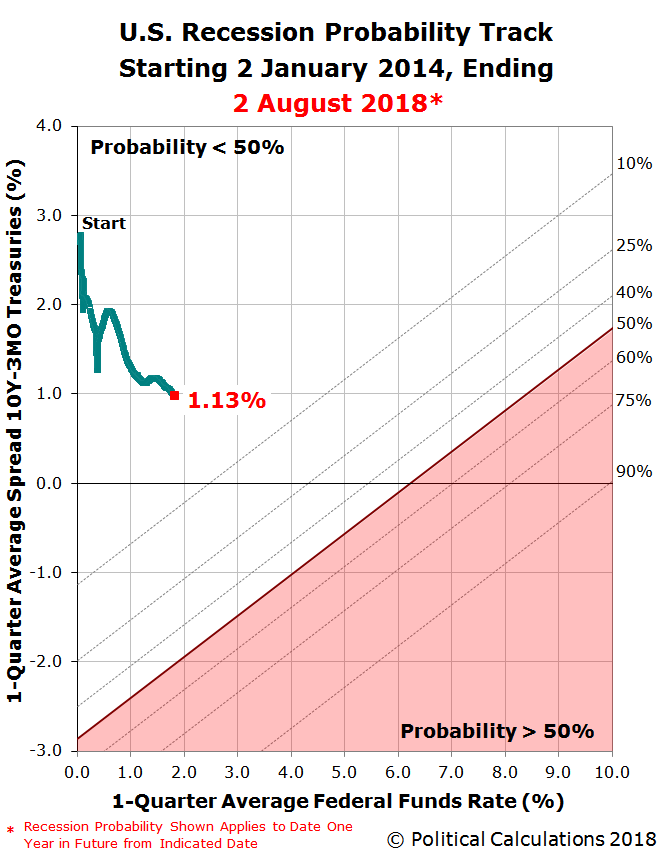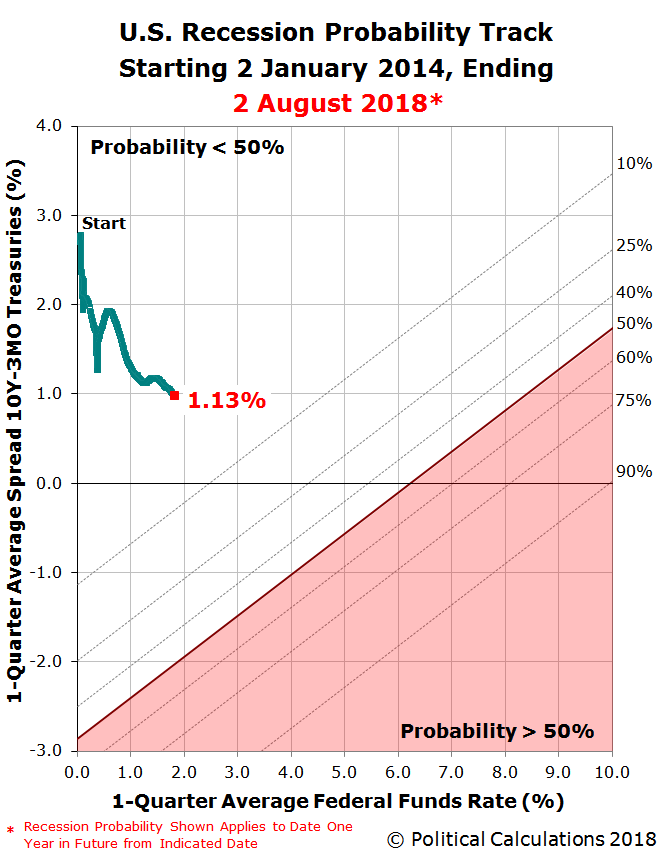As expected, the risk of a national recession beginning in the United States at some time in the next twelve months has increased by 0.3% over the last six weeks. As of Thursday, 2 August 2018, the day after the Fed’s last two-day meeting, the risk of a recession beginning sometime between 2 August 2018 and 2 August 2019 stands at 1.1%, which is roughly a 1 in 91 probability.
That small increase to a still very-low-level is mainly attributable to the Fed’s recent series of quarter-point rate hikes, where its most recent was announced on 13 June 2018. Meanwhile, a small narrowing of the U.S. Treasury yield curve has taken place, as measured by the spread between the yields of the 10-Year and 3-Month constant maturity treasuries, has also made a small contribution toward the perceptible increase in future recession risk during the last six weeks.
For those playing the recession watch game at home, the Recession Probability Track visualizes how the risk of recession has slowly risen to the level we recorded on 2 August 2018.

We anticipate that the probability of recession will continue to rise through the end of 2018, since the Fed is expected to hike the Federal Funds Rate again in September 2018. As of the close of trading on Friday, 3 August 2018, the CME Group’s Fedwatch Tool was indicating a 96% probability that the Fed will hike rates by a quarter percent to a target range of 2.00% to 2.25% at the end of the Fed’s next meeting on 26 September 2018. Looking forward to the Fed’s 19 December 2018, the Fedwatch Tool is currently indicating a 69.4% probability of another quarter-point rate hike being announced before the end of the year.
After that, it looks like the Fed might take a breather in announcing further rate hikes, perhaps until the conclusion of its June 2019 meeting.














Leave A Comment